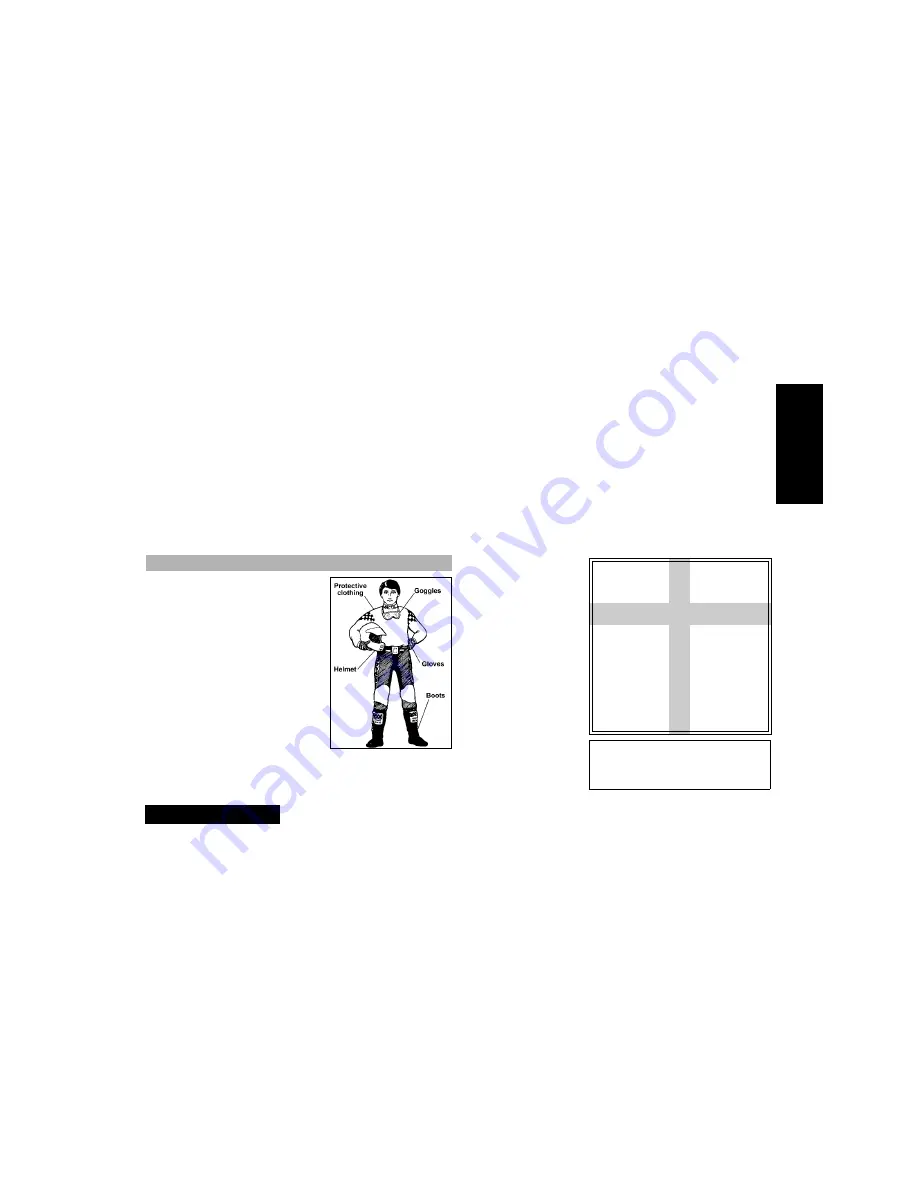
15
!
WARNING
Indicates a potential hazard that could result in a serious injury or death.
Divisio
n
I - Saf
ety
Prevention
Overview
When using an ATV, prevention is the name of the game. “Had you
only known” something could go wrong, you would have prevented
it. If you don’t notice your conditions and surroundings before riding
your ATV, you give up control over the situation. Using ATV preven-
tion techniques helps you forecast potential hazards before they
injure you or damage your ATV.
Following the safety instructions and warnings in this manual will
help you “P.A.S.S.” the safety test. P.A.S.S. stands for “
P
revention,”
“
A
ctive Riding,” “
S
ound Judgment,” and “
S
upervision.” Remember-
ing P.A.S.S. and what it stands for will help you have a safe, predict-
able ride every time you go out on your ATV.
Always wear clothing suited to the type
of riding you are doing. ATV riding
requires special protective clothing
which will make you feel more comfort-
able and reduce chances of injury.
You’ll find it important to dress correctly
for ATV riding in order to prevent
scraped skin and serious head injuries.
It’s easy and could save you time in the
long run not having to contend with an
injury. Of course, it also makes sense to
remember the seasons. Wear a hat under
your helmet and a snowmobile suit in
the winter and lighter, protective cloth-
ing in the summer. Following is the min-
imum protection you need to wear
during every ride.
Gloves
Your hands are targets for flying objects and branches. Along with
providing skin protection, gloves will shield your hands from harsh
weather. Wear gloves that are weather resistant and have a gripping
surface to keep them from sliding off the handlebar. Off-road style
gloves with knuckle pads are the best for comfort and protection.
Boots/Ankle Protection
Wear a boot that covers the largest possible area of your leg (prefera-
bly up to your knee) and can handle significant impact. Choosing
boots with low heels and a good tread will help prevent your feet
from slipping off the footrests in wet or rugged conditions or getting
hurt if they get hit by rocks, dirt, or branches.
Helmet
Your helmet is the most
important piece of protec-
tive gear for safe riding. A
helmet can prevent a seri-
ous head injury. There are
several types of helmets
on the market, but make
sure you wear a helmet
that complies with the cur-
rent standards of the U.S.
Department of Transporta-
tion (DOT), The Snell
Memorial Foundation, or
the American National
Standards Institute
(ANSI). Helmets that
comply with one or more
of these agency’s stan-
dards have a sticker on the
inside or outside of the
helmet.
Safe Riding Clothing and Gear
TESTIMONIAL
DOCUMENT#:
N490117A1
CITY/STATE:
N. HUNTINGDON, PA
SEX:
M
AGE:
6
BODY PART:
HEAD
DATE ACCIDENT:
06-14-94
DISPOSITION:
DOA
SYNOPSIS:
The 6 year old male victim
died from blunt force trauma to the
head when the 4-wheel ATV on which he
was a passenger struck a rock on a
hill connecting two roads and
flipped over backwards onto the
victim, shattering his bicycle
helmet. The victim was life-flighted
to the hospital and died that night.
The driver of the ATV, the victim’s
29 year old father, sustained minor
injuries, but wasn’t treated.
Helmets should have one of these:
1. DOT label
2. Snell label
3. ANSI Z90.1 label
















































